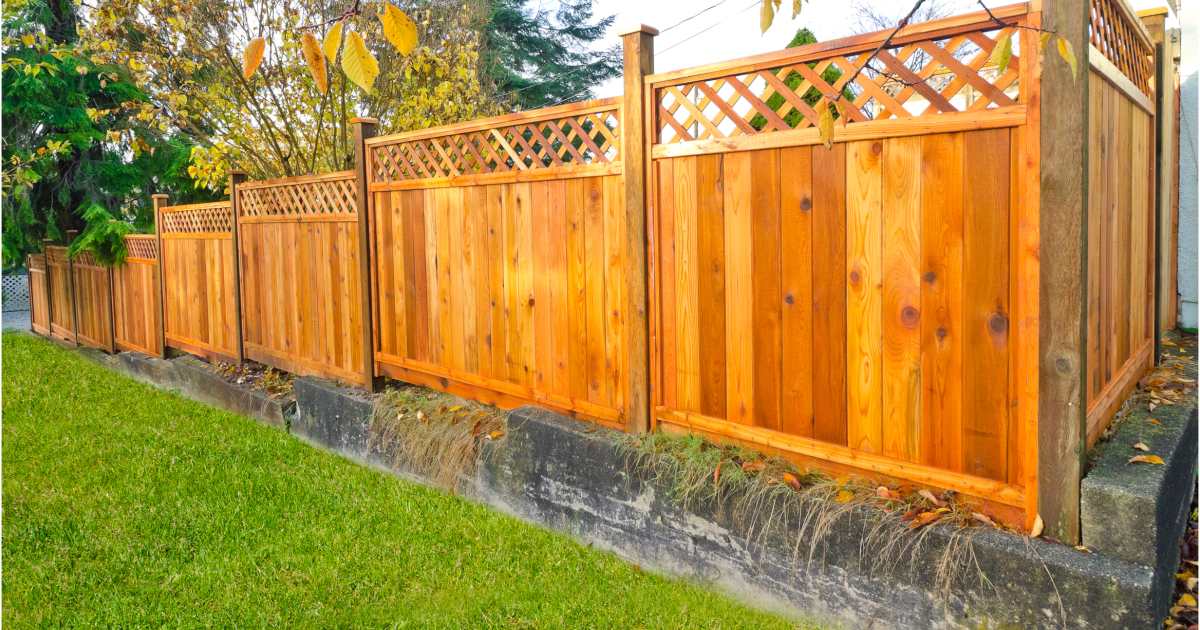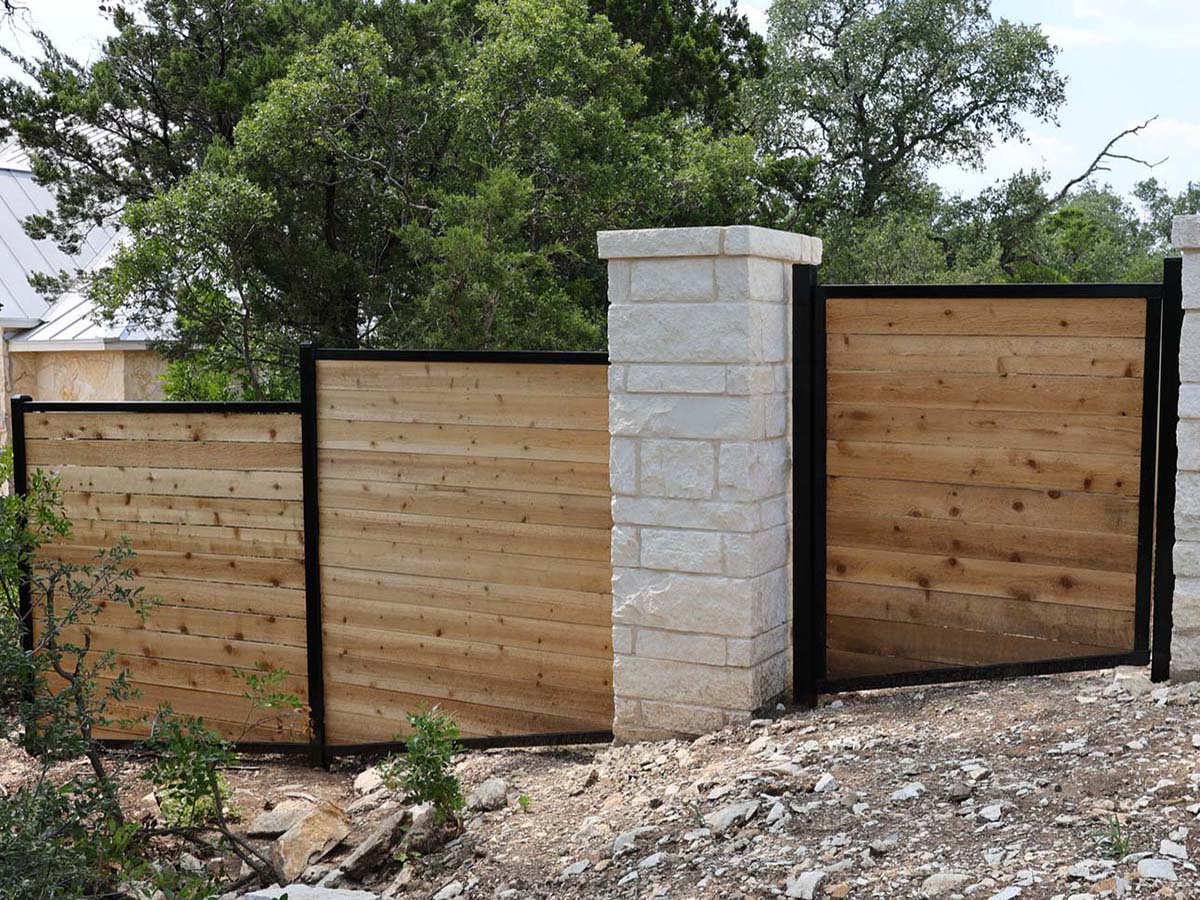All Categories
Featured
As sustainability becomes a more considerable problem for property owners and organizations alike, discovering green alternatives to typical fencing products is progressively important. From minimizing carbon impacts to preserving sources, environmentally friendly fencing choices provide numerous environmental advantages. In this post, we will discover several lasting fencing materials that can assist you produce an eco-conscious and long lasting boundary for your residential property.
![]()
Environmental Advantages: Bamboo takes in carbon dioxide and releases oxygen at a much faster price than other plants, making it an exceptional choice for decreasing greenhouse gases. It likewise calls for little to no pesticides or plant foods, even more reducing its environmental effect. Durability: Bamboo is naturally strong and resistant to parasites, degeneration, and wetness, making it a superb secure fencing option for long-term usage. If properly treated, it can also withstand rough climate problems. Visual Appeal: Bamboo supplies a unique and stylish look that functions well in numerous design systems, including tropical, Zen, and contemporary urban environments. While bamboo calls for some upkeep, such as routine cleaning and sealing, it is a elegant and highly lasting option for environment-friendly fence.
Ecological Advantages: By choosing recycled timber, you are aiding to reduce logging and avoid useful products from being thrown out. Additionally, repurposing timber conserves energy that would certainly or else be invested on producing new wood products. Resilience: Recycled wood can be simply as strong and long lasting as newly sourced wood, specifically if it is effectively treated. It might require extra upkeep to safeguard it from weathering and parasites. Aesthetic Allure: Recycled timber fences have a rustic appeal and can add an unique, weathered aim to your residential property. They can likewise be stained or painted to match your individual style. One factor to consider with recycled timber is that, gradually, it may require even more maintenance compared to various other products, but its eco-friendliness makes it worth the effort.
![]()
Ecological Advantages: Aluminum and steel can be recycled forever without losing quality. This reduces the need for brand-new basic materials and the ecological influence of metal manufacturing. Durability: Steel fencings are unbelievably long lasting, needing little to no maintenance over time. They are immune to the aspects, including wind, uv, and rainfall damages, making them lasting. Aesthetic Allure: Metal fencings can be tailored in a variety of styles, from contemporary layouts to a lot more traditional appearances. While they may not use as much privacy as wood, they can be used to develop classy, contemporary limits for your home. Aluminum and steel fences are ideal for those trying to find a lasting and low-maintenance option that still provides an eye-catching appearance.
Ecological Advantages: Living fences aid improve air quality by taking in carbon dioxide, and they can also sustain wildlife by providing all-natural habitats. They help lower sound air pollution and boost water retention, making them an ecologically beneficial choice. Sturdiness: While living fences call for more upkeep (regular trimming and treatment), they can last for several years with appropriate interest. Aesthetic Appeal: A living fence uses a beautiful and organic look, blending seamlessly right into all-natural landscapes. It can supply personal privacy and security while boosting the charm of your building. The disadvantage is that living fences require more time and effort to develop and maintain, but they offer long-term environmental benefits that much outweigh the job involved.
![]()
Ecological Benefits: Hemp grows promptly, needs little water, and requires no chemicals, making it an ecologically pleasant selection for secure fencing. It additionally assists to restore soil health and minimizes the need for chemical plant foods. Durability: Hemp fences are sturdy, resilient, and resistant to mold and mildew and bugs, offering reliable security for your residential or commercial property. Nonetheless, hemp fencing is still a fairly brand-new alternative, and availability might differ. Aesthetic Appeal: Hemp fences have a unique and natural look, usually looking like woven webs or mats, and can be used to develop eye-catching, eco-conscious limits. Hemp fence is not yet as commonly offered as other products, yet it's an appealing green option that is obtaining traction.
Verdict: Choose Eco-Friendly Fencing for a Sustainable Future. When it concerns selecting the appropriate fence for your building, environmentally friendly alternatives such as bamboo, recycled wood, metal, living fences, and hemp are exceptional choices for those that prioritize sustainability. These materials not only add to decreasing environmental influence yet also provide resilient, attractive boundaries that boost your residential property's aesthetic appeal. Whether you're wanting to develop personal privacy, improve protection, or simply include a visual touch, eco-friendly fence materials supply a service that is both attractive and liable.

- Bamboo Fence: A Fast-Growing Renewable Energy. Bamboo is just one of one of the most lasting materials available for secure fencing. Unlike traditional hardwoods, bamboo expands exceptionally promptly, with some species getting to maturation in just 3-5 years. This makes it a very sustainable source, as it can be gathered without damaging the plant or the atmosphere.
Environmental Advantages: Bamboo takes in carbon dioxide and releases oxygen at a much faster price than other plants, making it an exceptional choice for decreasing greenhouse gases. It likewise calls for little to no pesticides or plant foods, even more reducing its environmental effect. Durability: Bamboo is naturally strong and resistant to parasites, degeneration, and wetness, making it a superb secure fencing option for long-term usage. If properly treated, it can also withstand rough climate problems. Visual Appeal: Bamboo supplies a unique and stylish look that functions well in numerous design systems, including tropical, Zen, and contemporary urban environments. While bamboo calls for some upkeep, such as routine cleaning and sealing, it is a elegant and highly lasting option for environment-friendly fence.
- Recycled Wood Fencing: Giving Old Products New Life. Recycled timber is one more superb environmentally friendly fencing option. Making use of recovered wood from old barns, pallets, or various other structures can help in reducing the need for recently gathered hardwood, conserving trees and minimizing waste in land fills.
Ecological Advantages: By choosing recycled timber, you are aiding to reduce logging and avoid useful products from being thrown out. Additionally, repurposing timber conserves energy that would certainly or else be invested on producing new wood products. Resilience: Recycled wood can be simply as strong and long lasting as newly sourced wood, specifically if it is effectively treated. It might require extra upkeep to safeguard it from weathering and parasites. Aesthetic Allure: Recycled timber fences have a rustic appeal and can add an unique, weathered aim to your residential property. They can likewise be stained or painted to match your individual style. One factor to consider with recycled timber is that, gradually, it may require even more maintenance compared to various other products, but its eco-friendliness makes it worth the effort.
- Metal Secure Fencing: Durable and recyclable. Metal secure fencing, especially aluminum and steel, is a eco-friendly and durable option. These products can be made from recycled steels, lowering the need for mining and resources removal, both of which are energy-intensive procedures.

Ecological Advantages: Aluminum and steel can be recycled forever without losing quality. This reduces the need for brand-new basic materials and the ecological influence of metal manufacturing. Durability: Steel fencings are unbelievably long lasting, needing little to no maintenance over time. They are immune to the aspects, including wind, uv, and rainfall damages, making them lasting. Aesthetic Allure: Metal fencings can be tailored in a variety of styles, from contemporary layouts to a lot more traditional appearances. While they may not use as much privacy as wood, they can be used to develop classy, contemporary limits for your home. Aluminum and steel fences are ideal for those trying to find a lasting and low-maintenance option that still provides an eye-catching appearance.
- Living Fencings: Nature's Own Barrier. Living fences, or hedgerows, are a natural and eco-friendly alternative to traditional fencing products. These fencings are comprised of dense hedges, trees, or creeping plants that expand to create a border.
Ecological Advantages: Living fences aid improve air quality by taking in carbon dioxide, and they can also sustain wildlife by providing all-natural habitats. They help lower sound air pollution and boost water retention, making them an ecologically beneficial choice. Sturdiness: While living fences call for more upkeep (regular trimming and treatment), they can last for several years with appropriate interest. Aesthetic Appeal: A living fence uses a beautiful and organic look, blending seamlessly right into all-natural landscapes. It can supply personal privacy and security while boosting the charm of your building. The disadvantage is that living fences require more time and effort to develop and maintain, but they offer long-term environmental benefits that much outweigh the job involved.

- Hemp Fencing: All-natural and Lasting. Hemp is a eco-friendly and fast-growing plant that can be utilized to produce lasting fence. Hemp fibers are strong, eco-friendly, and immune to insects and mold, making it a fantastic choice for constructing fencings.
Ecological Benefits: Hemp grows promptly, needs little water, and requires no chemicals, making it an ecologically pleasant selection for secure fencing. It additionally assists to restore soil health and minimizes the need for chemical plant foods. Durability: Hemp fences are sturdy, resilient, and resistant to mold and mildew and bugs, offering reliable security for your residential or commercial property. Nonetheless, hemp fencing is still a fairly brand-new alternative, and availability might differ. Aesthetic Appeal: Hemp fences have a unique and natural look, usually looking like woven webs or mats, and can be used to develop eye-catching, eco-conscious limits. Hemp fence is not yet as commonly offered as other products, yet it's an appealing green option that is obtaining traction.
Verdict: Choose Eco-Friendly Fencing for a Sustainable Future. When it concerns selecting the appropriate fence for your building, environmentally friendly alternatives such as bamboo, recycled wood, metal, living fences, and hemp are exceptional choices for those that prioritize sustainability. These materials not only add to decreasing environmental influence yet also provide resilient, attractive boundaries that boost your residential property's aesthetic appeal. Whether you're wanting to develop personal privacy, improve protection, or simply include a visual touch, eco-friendly fence materials supply a service that is both attractive and liable.
Latest Posts
The Restroom Upgrade Every Detroit Home Is Worthy Of
Published Apr 19, 25
1 min read
Affordable Car Repair Services at Montclare Auto Repair - Don’t Wait, Act Now!
Published Apr 19, 25
2 min read
Unlock Exclusive Discounts with WyHy's Love My Lending institution Rewards
Published Apr 19, 25
1 min read
More
Latest Posts
The Restroom Upgrade Every Detroit Home Is Worthy Of
Published Apr 19, 25
1 min read
Affordable Car Repair Services at Montclare Auto Repair - Don’t Wait, Act Now!
Published Apr 19, 25
2 min read
Unlock Exclusive Discounts with WyHy's Love My Lending institution Rewards
Published Apr 19, 25
1 min read